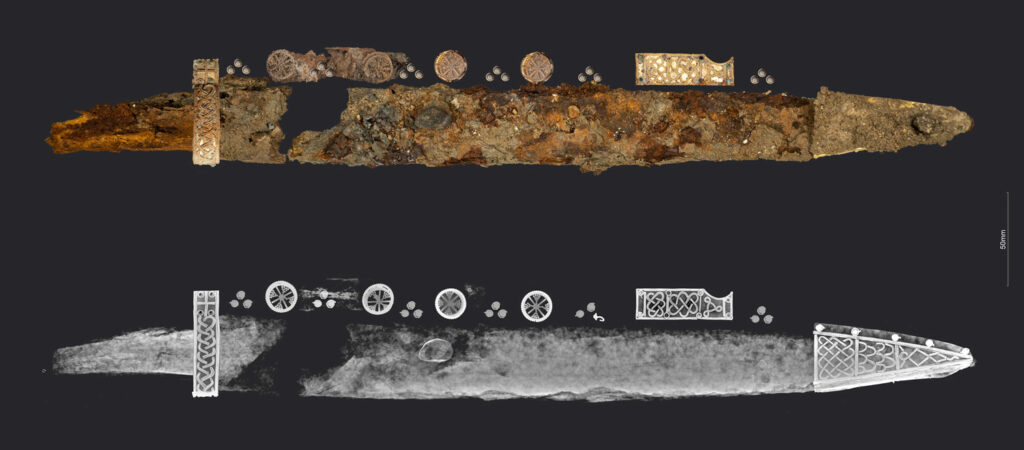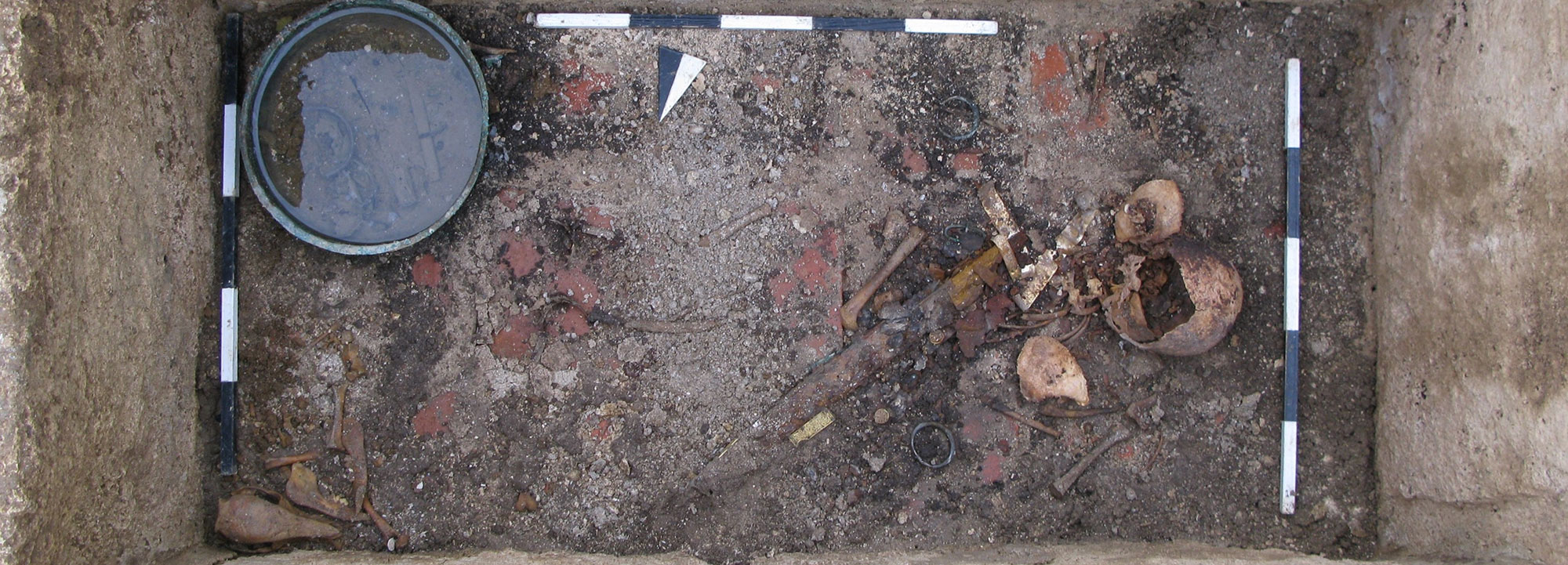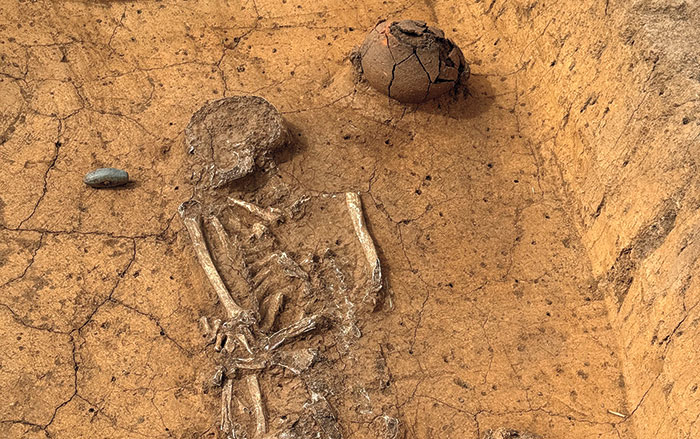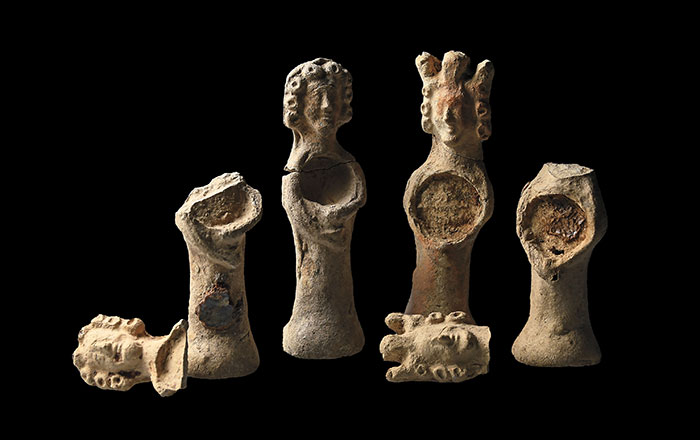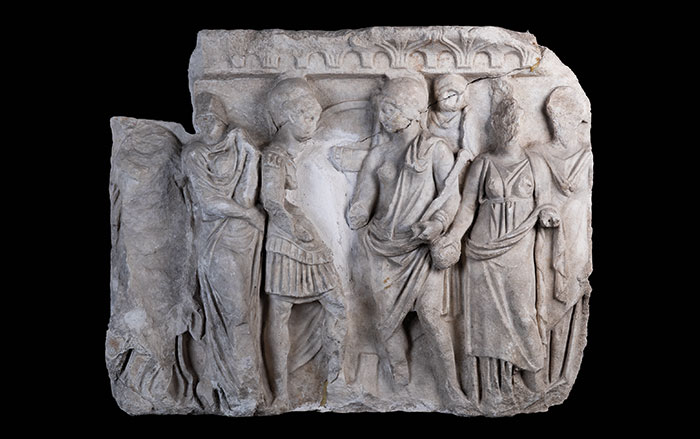
MATSSIES, GERMANY—Four years ago German archaeologists unearthed the grave of a small child who was buried inside a former Roman villa at the Mattsies site in southern Germany. The burial was remarkably well-preserved, but the discovery made headlines due to the researchers' use of a groundbreaking new technique. They flash-froze the entire burial using liquid nitrogen so that the contents could be removed en masse and transported to a laboratory where they could be meticulously excavated. According to a La Brújula Verde report, archaeologists have recently revealed new details about how the boy, now dubbed the Eisprinz, or “Ice Prince,” lived and died. The child, who had blue eyes and light-colored hair, was born into a family of high social status between a.d. 670 and 680. He was around one-and-a-half years old when he succumbed to an untreated ear infection. After his death, the boy’s parents took exceptional care with his burial. They dressed him in an outfit that included leather shoes and a long-sleeved tunic adorned with silk. He wore silver bracelets on his wrists and silver spurs on his feet, and was even laid to rest with a small sword and scabbard inlaid with a gold fitting. The body was surrounded by banqueting paraphernalia and dried fruits and nuts. The part of the villa that contained the boy's stone burial chamber was even remodeled into a kind of memorial, becoming a place of worship and remembrance. “They not only buried the child with honors but also tended to his memory with great care,” said Mathias Pfeil of the Bavarian State Office for Monument Conservation. To read about an intricately decorated fragment of a child's leather shoe uncovered beneath the streets of Saint-Ursanne, Switzerland, go to "Medieval Baby Bootie."
